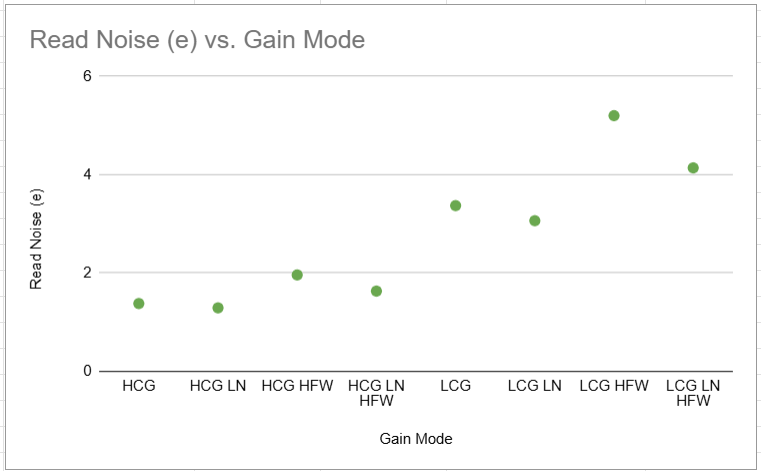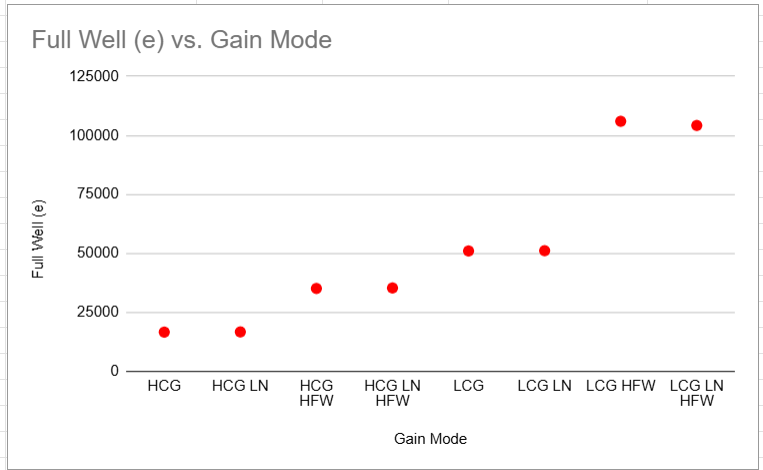Hi,
I wanted to share with this forum the sensor analysis I have done on my Touptek ATR2600 mono. My main goal was to see how the 2 options Low Noise ( I will call it LN) and the High Full Well (I will call it HFL) impact the two gain modes HCG and LCG.
Based on the results I would love to hear any recommendation on what combination are best to use for my setup and bortle 4-5 sky.area and for the 2 scenarios : brandband and narrowband targets.
Mount: AZ-EQ6R
Scopes: Esprit150 and TS-Photoline 80 f/6 (with 0.8 reducer
Note:
My conclusions are below but please feel free to share thoughts and any other recommendations. Also I know that there is no perfect rule (moon may affect as well as guide performance, etc..) but I am looking to a reasonable "rule of thumb" without getting deep into equations or large dissertations. I know that the discussion can get quite complicated so let's try to keep it simple
I have also verified that with those options and 5 mins exposure I don't get satured stars (and actually i could go longer than 5 mins...). When shotting I use Offset 200 (verified with NINA to be the right value to not get black pixel)
Broadband target:
Narrowband target:
Wondering if for Broaddband I should use same options as for Narrowband (for sure if in the same night I shoot RGB and some Ha regions).
Thank you
Seba




I wanted to share with this forum the sensor analysis I have done on my Touptek ATR2600 mono. My main goal was to see how the 2 options Low Noise ( I will call it LN) and the High Full Well (I will call it HFL) impact the two gain modes HCG and LCG.
Based on the results I would love to hear any recommendation on what combination are best to use for my setup and bortle 4-5 sky.area and for the 2 scenarios : brandband and narrowband targets.
Mount: AZ-EQ6R
Scopes: Esprit150 and TS-Photoline 80 f/6 (with 0.8 reducer
Note:
- For all testing I have used the Touptek ASCOM driver and not the native driver. Reason is because I will be using Voyager which doesn't have the option to use the native driver
- Temp sensor: -10 C
- The graph below are all at gain 100 (any higher will just worsening in general the values or their combination so the assumption is that for any mode combination the camera will be used at gain 100)
- If of any help, I can share full data for each combination (analysis done with Sharpcap PRO)
- I aim to keep my exposure length to approx 5 minutes or so (the mount doesn't stand well little wind gust and sporadic clouds in Denmark are frequent). So I want to stay with mid range length exposure
- With 5 or so minutes exposure I may not care much about read noise and of course my priority is to reduce shot noise (the big guy!) but without going to a very long exposure for reasons above mentioned
My conclusions are below but please feel free to share thoughts and any other recommendations. Also I know that there is no perfect rule (moon may affect as well as guide performance, etc..) but I am looking to a reasonable "rule of thumb" without getting deep into equations or large dissertations. I know that the discussion can get quite complicated so let's try to keep it simple
I have also verified that with those options and 5 mins exposure I don't get satured stars (and actually i could go longer than 5 mins...). When shotting I use Offset 200 (verified with NINA to be the right value to not get black pixel)
Broadband target:
- exp 5 min each filter (R/G/B)
- LCG
- Low Noise
Narrowband target:
- exp 5 min each filter (Ha/OIII/SII)
- HCG
- Low Noise and High Full Well
Wondering if for Broaddband I should use same options as for Narrowband (for sure if in the same night I shoot RGB and some Ha regions).
Thank you
Seba



